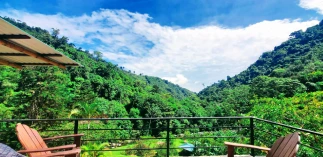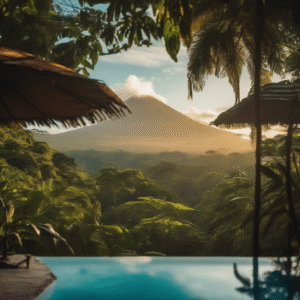High in the Costa Rican mountains, amidst the whispering pines and emerald valleys, resides a little marvel – the Costa Rican pygmy-owl (Glaucidium costaricanum). This diminutive denizen of the cloud forests is a true wonder, both for its miniature stature and its fascinating nocturnal lifestyle. Here at our mountain retreat, nestled amidst the ideal habitat for these feathered friends, we often hear their calls echoing through the stillness of the night.
Standing at a mere 5.7 to 6.7 inches tall, the pygmy-owl is one of the smallest owl species in the world. Don’t be fooled by its size, though. This little hunter packs a punch! With piercing yellow eyes and a sharp beak, it’s a predator perfectly adapted to its environment.
A Master of Disguise:
The pygmy-owl comes in two stunning color morphs: a rich, earthy brown and a vibrant rufous. This remarkable camouflage allows it to blend seamlessly into the tree bark and branches, disappearing in plain sight. Adding to its stealthy nature are the near-silent wing feathers, enabling it to flit through the trees undetected by its prey.
Day or Night, the Hunt Goes On:
Unlike most owls, the Costa Rican pygmy-owl is not strictly nocturnal. While it does hunt at night, it’s also quite active during the day, making it a rare treat for our guests to spot. Its diet consists primarily of insects, lizards, and small rodents – all essential for maintaining its high energy levels.
A Song in the Night:
While their eyesight is exceptional, pygmy-owls also rely on their keen hearing to locate prey. Their distinctive call, a whistled song of doubled notes, can often be heard at dusk and throughout the night. For the lucky listener, it’s a melody that signifies the presence of this hidden gem in the Costa Rican mountains.
A Species to Treasure:
Thankfully, the Costa Rican pygmy-owl is listed as “Least Concern” by the IUCN. However, as with all wildlife, habitat preservation is key to its continued success. Here at our mountain retreat, we are committed to sustainable practices that ensure the health and well-being of the cloud forest ecosystem, creating a haven for this little wonder and countless other species.
For more information, please view our comprehensive guide about the birds of Costa Rica







